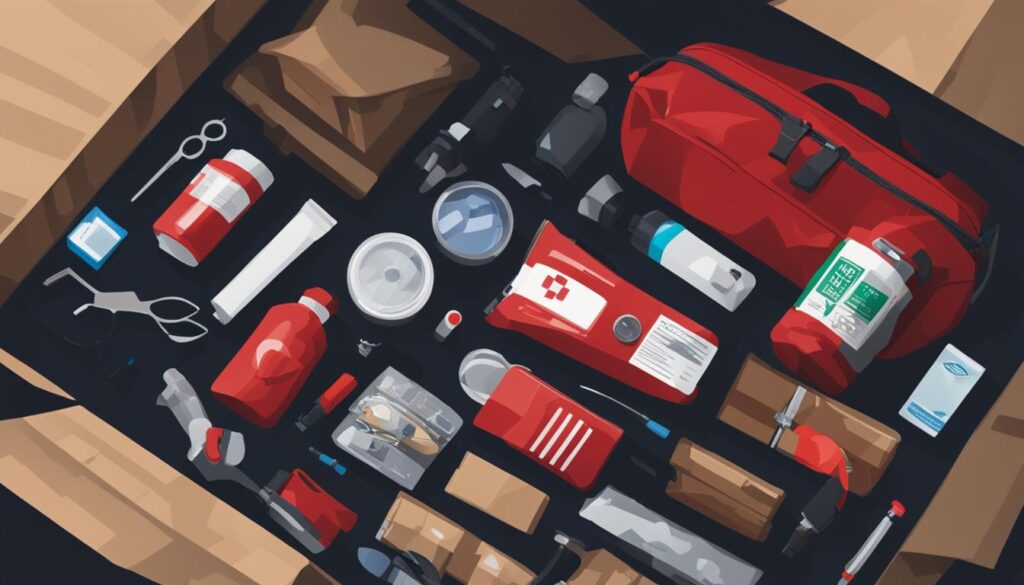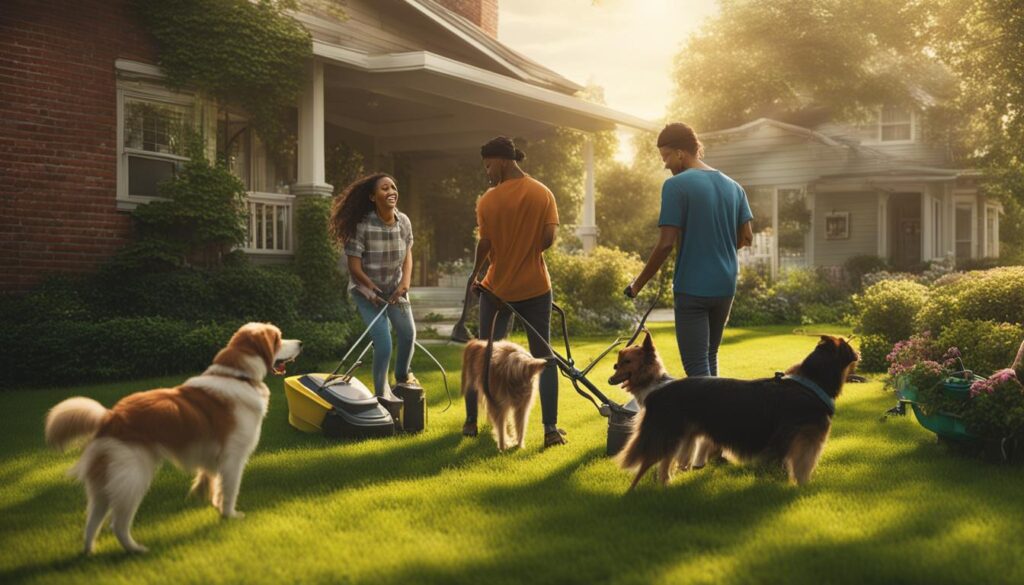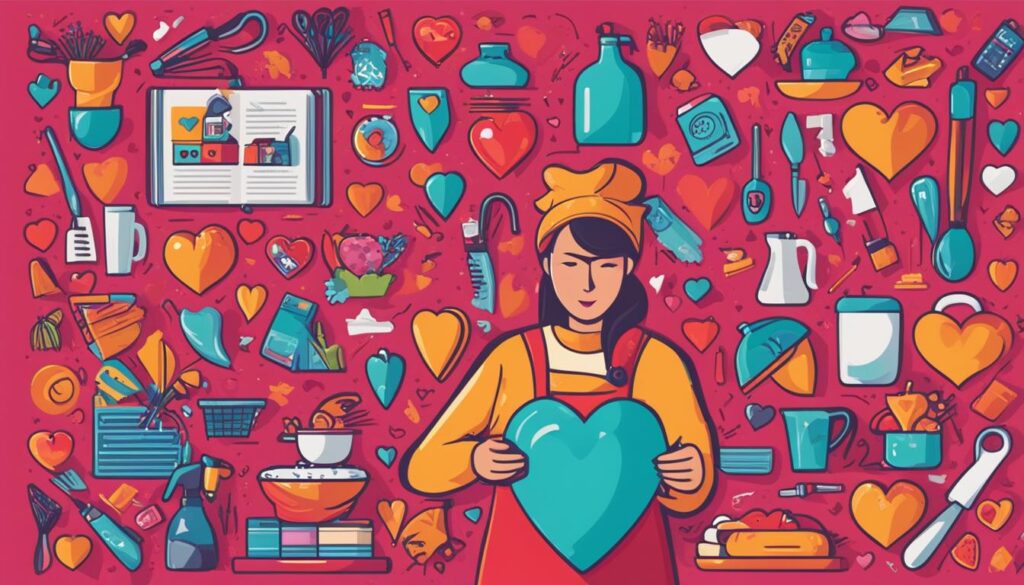We may earn money or products from the companies mentioned in this post.
Unexpected situations can strike at any time, and it’s crucial to be prepared with an emergency kit. Disaster preparedness can be the difference between life and death in extreme circumstances, and knowing what to include in your survival kit can keep you safe and comfortable during a crisis.
In this comprehensive guide, we’ll walk you through the necessary steps to create the perfect emergency kit. From essential items to disaster preparedness tips, we’ll cover everything you need to know to stay safe and secure during unexpected events.
Key Takeaways:
- Having an emergency kit is vital for disaster preparedness.
- Survival kits should include essential items such as food, water, first aid supplies, and communication devices.
- Creating an effective emergency kit requires planning, organization, and the right gear.
- Maintain and update your emergency kit regularly to ensure it’s always ready for use.
- Knowing how to handle emergencies with confidence can make all the difference.
Understanding the Importance of Emergency Preparedness
Emergencies can strike at any moment, and being prepared for them is critical. Disaster preparedness can mean the difference between life and death, especially when individuals must evacuate their homes or shelter in place. Knowing how to respond to an emergency and having the necessary supplies to do so can help keep you and your family safe.
Emergency preparedness is vital for several reasons. First, it allows you to take control of your situation, reducing fear and anxiety in the face of a crisis. Having an emergency kit and a plan in place can provide peace of mind and help mitigate the effects of a disaster in the immediate aftermath. Second, disaster preparedness ensures that you have access to the necessary supplies and resources to survive, such as food, water, and medical supplies.
Another essential aspect of emergency preparedness is communication. Having a way to communicate with family members and emergency services can be critical during a crisis. Without communication, it can be challenging to call for help or locate loved ones.
Disaster preparedness also helps communities recover faster from natural disasters and other crises. When individuals and families take the necessary precautions, such as creating an emergency kit and having a plan in place, it can reduce the burden on first responders and other resources. It also helps to ensure that everyone in the community stays safe, even during difficult times.
Overall, emergency preparedness is critical for anyone who wants to stay safe during unexpected events. By having an emergency kit and a plan in place, you can reduce fear and anxiety and ensure that you have everything you need to survive a crisis. Don’t wait until it’s too late; start preparing your emergency kit today.
Essential Items for Your Emergency Kit
Emergency supplies are vital to have on hand in the event of a crisis. When assembling your emergency kit, it’s essential to include all necessary items to ensure your safety and survival. Here is a list of emergency essentials to consider:
| Emergency Supplies | Quantity |
|---|---|
| Water | 1 gallon per person per day |
| Non-perishable food | At least a 3-day supply per person |
| Battery-powered or hand-crank radio | 1 radio and extra batteries |
| Flashlight | 1 flashlight and extra batteries |
| First Aid kit | Include necessary medications and medical supplies |
| Whistle | 1 whistle to signal for help |
| Dust mask | At least one per person |
| Plastic sheeting and duct tape | To shelter in place |
| Moist towelettes and garbage bags | For personal hygiene purposes |
| Wrench | To turn off utilities |
| Manual can opener | To open canned food |
| Cell phone charger and backup battery | To stay connected with emergency services and loved ones |
Make sure to include any additional items that are specific to your household, such as prescription medications, infant formula, or pet supplies. Keep your emergency supplies in an easily accessible location and make sure all family members know where to find them.
How to Create an Effective Emergency Kit
Creating an emergency kit is essential to ensure your safety during unexpected situations. But how do you make sure your kit is effective? Here are some tips on selecting the right emergency gear, bag, and pack to create the perfect emergency kit.
Selecting the Right Emergency Gear
The first step in creating an emergency kit is selecting the right gear. Your gear should be durable, lightweight, and easy to carry. Some essential items for your kit include:
- Flashlights: A reliable source of light is crucial during emergencies. Choose a durable flashlight that’s powered by batteries or hand-crank to ensure it works even if the power goes out.
- Radio: A portable radio can keep you up-to-date on the latest news and alerts. Look for a radio that’s battery-powered or hand-cranked to ensure it’s always functional.
- First-Aid Kit: Injuries can happen during emergencies, so having a first-aid kit is essential. Make sure your kit includes bandages, gauze, antiseptic wipes, and pain relievers.
- Whistle: In case you need to alert rescuers, a whistle is an essential item to include in your kit.
Choosing the Right Emergency Bag or Pack
After selecting your gear, the next step is choosing the right bag or pack to hold everything. Your bag or pack should be durable, waterproof, and easy to carry. Some popular options include:
- Backpack: A backpack is a popular option for holding emergency gear. Make sure the backpack is sturdy and has multiple compartments to organize your items.
- Messenger Bag: For a smaller kit, a messenger bag can be a convenient option. Look for a bag with extra pockets and compartments to hold all your gear.
- Duffel Bag: If you have a larger kit, a duffel bag can be a good option. Choose a bag with durable handles and a shoulder strap for easy carrying.
Packing Your Emergency Kit
Once you have your gear and bag or pack, it’s time to pack your kit. Here are some tips for efficient packing:
- Organize by Priority: Place the most essential items at the top of your pack for easy access during emergencies.
- Use Packing Cubes: Packing cubes can help you organize your gear and efficiently use space in your bag or pack.
- Label Everything: Label all your gear to ensure you can quickly find what you need during emergencies.
By following these tips, you can create an effective emergency kit that’s tailored to your needs. Remember to regularly review and update your kit to ensure it’s always ready for use.
Maintaining and Updating Your Emergency Kit
Keeping your emergency kit up-to-date and well-maintained is crucial for ensuring your safety during unexpected events. Here are some tips on how to keep your emergency supplies in top shape:
| Task | How Often? |
|---|---|
| Check expiration dates of food and medications | Every six months |
| Replace batteries in communication devices | Annually |
| Review and update emergency contact information | Annually |
| Inspect kit for damage or missing items | Monthly |
It’s important to store your emergency kit in a cool, dry place to prevent damage to its contents. Make sure it’s easily accessible and that everyone in your household knows where it’s located.
Don’t forget to update your kit based on changes in your household, such as the addition of a new family member or a change in medication.
Regular maintenance and updates can help ensure that your emergency kit is always ready for use in case of a disaster. By taking the time to review and replace items as needed, you can have peace of mind knowing that you’re prepared for any emergency.
Tips for Handling Emergencies with Confidence
Emergencies can be overwhelming and frightening. However, being prepared and having the right knowledge can make all the difference. Here are some tips for handling emergencies with confidence:
Stay Calm
It’s crucial to remain calm during an emergency. Panicking can hinder your ability to make rational decisions and take necessary actions. Take a few deep breaths, assess the situation and prioritize your next steps.
Follow Your Emergency Plan
Having an emergency plan is essential, especially if you’re dealing with an unexpected crisis. Make sure you have an emergency kit and know where to go and what to do in case of an emergency.
“By failing to prepare, you are preparing to fail.” – Benjamin Franklin
Communicate and Coordinate
Communicating with others during an emergency is crucial. Make sure to check on your loved ones, share important information, and coordinate with emergency responders if necessary. Keep important contact information and documents with your emergency kit.
Stay Informed
Stay informed about the situation by listening to local news and emergency broadcasts. This will help you make informed decisions and take appropriate actions.
Trust Your Instincts
If you feel that you or others are in immediate danger, trust your instincts and take immediate action. It’s better to be safe than sorry.
Practice Makes Perfect
The more you practice your emergency plan, the more confident you will feel during an actual crisis. Make sure to review and update your emergency kit and plan regularly to stay prepared.
By following these tips and being prepared, you can handle emergencies with confidence and keep yourself and your loved ones safe.
Special Considerations for Specific Emergencies
When it comes to emergency preparedness, it’s essential to tailor your kit and strategies based on the specific crisis you may encounter. Here are some special considerations to keep in mind:
Natural disasters
Natural disasters such as hurricanes, earthquakes, and floods require a different approach to preparedness. In addition to basic emergency supplies like food, water, and first aid, consider including items like a NOAA weather radio, blankets, and waterproof gear. It’s also important to have a plan for evacuating your home and getting to a safe location.
Power outages
A power outage can happen at any time, leaving you without electricity for hours or even days. To prepare for this type of emergency, consider including items such as flashlights, extra batteries, and a portable phone charger in your kit. It’s also a good idea to have a supply of non-perishable food that doesn’t require cooking.
Medical emergencies
If you or someone in your household has a medical condition, it’s important to plan ahead for emergencies. This may include packing additional medications and medical supplies in your emergency kit, as well as creating a list of emergency contacts and instructions for administering medication or treatment.
Special needs
If you have special needs, such as mobility issues or require medical equipment, it’s crucial to plan ahead for emergencies. Make sure your emergency kit includes any necessary equipment or supplies, and consider making a plan with a trusted friend or family member to assist you in an emergency.
Remember, these are just a few examples of the special considerations you may need to make when preparing for emergencies. Take the time to assess your individual needs and create a customized emergency kit and plan that works best for you and your family.
Conclusion
In conclusion, we hope this guide has provided you with the knowledge and tools needed to create the perfect emergency kit. Remember, being prepared is key to staying safe during unexpected events.
Don’t forget to regularly review and update your emergency kit, and tailor it to specific emergencies as needed. By following the best practices for selecting, organizing, and maintaining your kit, you’ll have the confidence to handle any crisis situation.
Stay Prepared, Stay Safe
Emergencies can happen at any time, and being prepared can save your life. Remember to stay informed about potential threats in your area, and have a plan for evacuation or shelter in place if necessary.
Thank you for reading our essential guide to the ideal emergency kit. Stay safe, and stay prepared.
FAQ
What should be included in an emergency kit?
An emergency kit should include essential items such as food, water, a first aid kit, flashlight, batteries, a portable radio, extra clothing, cash, and important documents. It is important to customize your kit based on your specific needs and the potential emergencies you may face.
How often should I update my emergency kit?
It is recommended to review and update your emergency kit at least once a year. Check expiration dates of food and water supplies, replace expired batteries, and refresh any medications or personal items that may have expired. Regularly evaluate your kit to ensure it meets your current needs.
Can I use my regular backpack as an emergency kit bag?
While a regular backpack can be used as an emergency kit bag, it is advisable to choose a dedicated emergency bag that is durable, waterproof, and has multiple compartments for easy organization. Emergency bags are designed to withstand rough conditions and provide quick access to essential items.
How should I store my emergency kit?
Store your emergency kit in a cool, dry place that is easily accessible. It is recommended to keep it in a designated area that everyone in your household is aware of. Avoid storing it in extreme temperatures, such as in a car trunk, as this can affect the integrity of certain items.
Are there any additional items I should consider for specific emergencies?
Yes, for specific emergencies, it is important to tailor your emergency kit. For example, if you live in an area prone to hurricanes, you may want to include hurricane shutters, plywood, and a generator. Consider the potential hazards in your area and research the specific items that will be useful in those situations.
Affiliate Disclosure: This post may contain affiliate links. If you purchase through our link, we may receive a small commission, but at no additional cost to you. For more information, please see our Disclosure statement.



